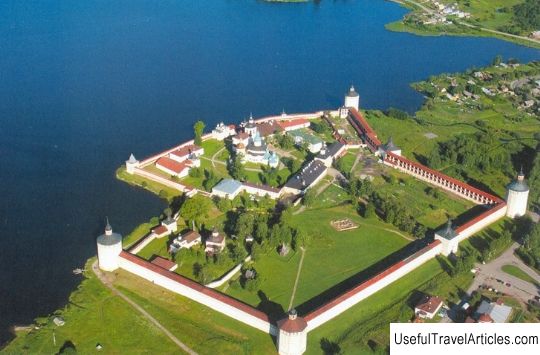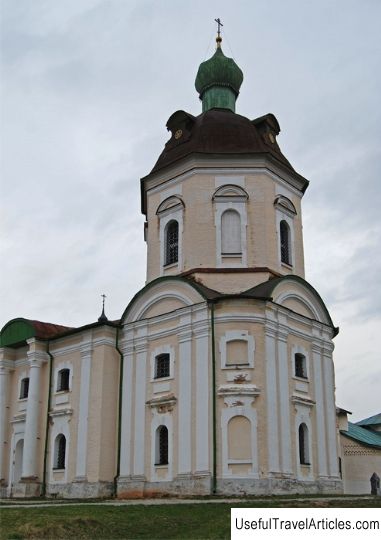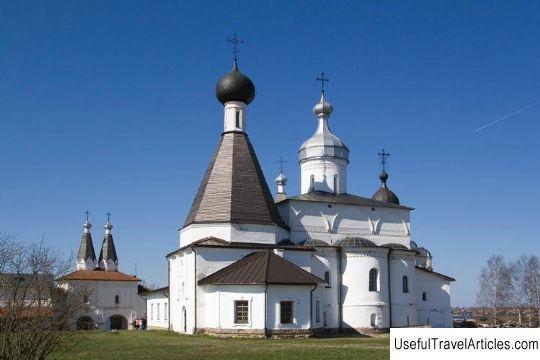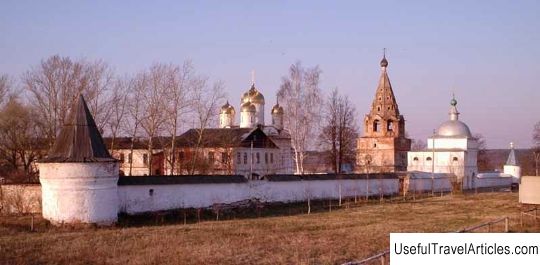Assumption Cathedral of the Kirillo-Belozersky Monastery description and photos - Russia - North-West: Vologda Oblast
Rating: 7,5/10 (103 votes) 
Assumption Cathedral of the Kirillo-Belozersky Monastery description and photos - Russia - North-West: Vologda Oblast. Detailed information about the attraction. Description, photos and a map showing the nearest significant objects. Photo and descriptionThe Cathedral, named after the Assumption of the Blessed Virgin Mary, is the main temple of the largest monastery in Europe - the Assumption Kirillo-Belozersky Monastery. It was founded at the end of the 14th century by the Monk Cyril of Belozersk and the Monk Ferapont of Mozhaisk. The Monk Cyril was a disciple of Saint Sergius of Radonezh and an archimandrite of the Simonov monastery in Moscow, where the monk Ferapont of Mozhaisk asceticised with him. The date of the foundation of the monastery is the date of construction of the first church of the Assumption of the Mother of God. On the site of this temple, another wooden temple was built, which burned down in a fire in 1497. In the same year, a large stone cathedral was erected in its place, which has survived to this day. Like the previous two, the third temple was built by Rostov masters. This is the first stone building in the north of Russia. It is known that it was erected by 20 Rostov masons, headed by Prokhor Rostovsky, within 5 months in one summer period. The architectural appearance of the cathedral belongs to the era of the formation of all-Russian architecture in the second half of the 15th century. It reflects the typical features of the Moscow building tradition, which can also be traced on the example of such famous architectural monuments as the Trinity Cathedral of the Trinity-Sergius Lavra, the Zvenigorod Assumption Cathedral. Later, the architectural forms of this cathedral had a great influence on the traditions of local stone architecture. The architectural ensemble of the cathedral did not immediately acquire the form that we can capture today. Since the end of the 15th century, it has undergone significant changes. The main building is a cube-shaped temple with semicircular apses and one massive dome. Several chapels were added to the main structure of the temple, later at different times. On the east side of the temple adjoins the Vladimirskaya Church, built in 1554, which served as the burial vault of the Vorotynsky princes. In the north, there is a temple in honor of St. Epiphanius, which was erected over the burial place of Prince F. Telyatevsky, monastic Epiphany. From the south, another side-by-side temple rises - Kirillovsky. It was originally built in 1585 over the relics of the founder of the monastery, and in 1781-1784 a new church was erected on the site of a dilapidated structure in memory of the Monk Kirill of Belozersky. In 1595-1596, a one-storey vaulted porch was added to the main building of the cathedral on the western and northern sides. Instead of the wide arched porch openings, which were laid with masonry in the 17th century, small windows were made. In 1791 a high one-domed vestibule was built. Thus, the original appearance of the cathedral was changed beyond recognition. The greatness of the monastery was reflected in the remarkable monument of Russian icon painting of the 15-17th centuries - the iconostasis of the cathedral. At the beginning, it had 4 tiers - local, deesis, festive and prophetic. In the 17th century, a fifth, forefather tier was added and a new Royal Doors with a silver frame were built. Simple tables of the ancient iconostasis were replaced with carved and gilded ones, as a result of which some icons did not fit into the new iconostasis. The local tier housed the most miraculous locally revered ancient icons, which were closely related to the history of the creation of the temple. The Deesis row consisted of 21 icons and was one of the largest in the 15th century. Of the surviving locally revered icons of the ancient iconostasis, mention should be made of the "Assumption" by Andrei Rublev, or, according to one of the versions, of one of his close disciples, the icons of the Mother of God "Odigitria" and "Cyril Belozersky in Life", written during the life of the monk by the icon painter Dionysius Glushitsky, who founded Sosnovetsky monastery, as well as a rich carved gilded icon case with paintings made for this icon. At the moment, all ancient icons are in the expositions and storerooms of the museum. Separately, mention should be made of the existence of previously rich murals made in 1641 by the icon painter Lyubim Ageev, as evidenced by the inscription on the northern wall of the cathedral. Thus, the Assumption Cathedral is an ancient architectural monument of the late 15 century of the monastery, which was of great importance in the spiritual life and history of our people.      We also recommend reading Devils Museum (A. Zmuidzinaviciaus kuriniu ir rinkiniu muziejus) description and photo - Lithuania: Kaunas Topic: Assumption Cathedral of the Kirillo-Belozersky Monastery description and photos - Russia - North-West: Vologda Oblast. |




